Best Physiotherapy Exercise After Total Hip Replacement:
To obtain full healing after Hip replacement and restore power and mobility to your hip joint you have to do routine exercise and a gradual return to daily activities is important for your full rehab.
Your doctor and physiotherapist may advise that you exercise for 30 to 40 minutes a day, or even two to three times daily during your earlier rehab. The physician may suggest some of the activities shown in this article. Doing exercise after hip replacement helps you to gain muscle strength around the artificial joint and get back to a normal lifestyle.
Introduction:
This article can help you sufficiently understand your exercise and activity schedule, supervised by your physiotherapist and doctor. Before beginning any of the exercises, make sure to speak with your therapist or surgeon to guarantee your safe recovery. Exercise after hip replacement must be needed to improve blood circulation, gain strength and improve flexibility.That’s why your surgeon may advise you to go for physiotherapy to get better functional activities.
What is Total Hip Replacement?
Hip replacement is also known as hip arthroplasty. This is a surgical procedure to manage hip pain. This surgery replaces affected portions of the hip joint with artificial implants or prosthetic components. The thigh bone, or femur, contains a ball at the top, also known as the thigh bone, and a socket in the pelvis, also known as the hip bone.
A metal stem is inserted into the hollow center of the femur in place of the damaged femoral head, that is subsequently released. It is possible to press-fit the femoral stem into the bone or use cement.A metal or ceramic ball is put on the upper end of the stem. This ball substitutes the damaged femoral head that was excreted.
The injured cartilage surface of the socket (acetabulum) is released and substituted with a metal socket. Staples or cement are many times used to keep the socket in its place.To provide a smooth gliding surface, a spacer made of plastic, ceramic, or metal is put between the newest ball and the socket. On the left side separate parts of a total hip replacement. In the center, parts are merged into an implant. The right side parts implant as it works into the hip.
This information will assist you in understanding the benefits and limitations of carrying out a hip replacement, no matter whether you have just begun looking into options for treatment or have already decided to have hip replacement surgery. If your hip joint has been damaged by arthritis, a fracture, or other conditions, common movements like walking or getting in and out of a chair may be painful and difficult. Your hip joint may be rigid, and it may be difficult to put on your shoes and socks. You may feel uneasy while resting.
You may elect to have a hip replacement if medications, modifications to your daily routine, and the use of walking assistance are insufficient to relieve your symptoms. Surgery to replace your hips is a safe and effective operation that can help you feel better, move better, and resume your daily activities. Hip replacement operation is one of the most successful operations in all of the treatment. The effectiveness of complete hip replacement has significantly increased since the early 1960s as a result of technological and surgical advancements in joint replacement. Over 480,000 complete hip replacements are performed annually in the United States, according to the Agency for Healthcare Research and Quality.
Anatomy
The biggest joint in the human body is the hip joint. This is a ball-and-socket type joint. The socket is made by the acetabulum, the acetabulum is part of the pelvic bone. The ball is made by the femoral head, the femoral head is part of the femur bone.Articular cartilage, an elastic tissue that softens bone ends and makes it possible for them to roll freely, covers the ends of the bones that make up the ball and socket. The smooth articular cartilage deteriorates and becomes ragged and rough in hip osteoarthritis.
When surgery is recommended?
There have many reasons why your surgeon may suggest hip replacement surgery. Individuals who help from hip replacement surgery often have:
- Everyday actions including walking and bending have become difficult by hip pain
- Hip pain that persists while sleeping, either day or night
- Immobility in the hip that restricts the capacity to move or raise the leg
- Not relieve pain by getting anti-inflammatory drugs, physical therapy, or walking supports
Candidates for Surgery:
There have no definite age or weight limitations for total hip replacements.
Suggestions for operative treatment are based on a patient’s discomfort and disability, not age. many patients who experience total hip replacement are aged 50 to 80, but orthopedic surgeons assess patients personally. From the young teenager with juvenile arthritis to the elderly patient with degenerative arthritis, this procedure has been performed successfully at all ages.
Importance of exercise in hip replacement:
- Helps to strengthen the muscles around the artificial hip joint.
- Helps to improve flexibility.
- Mental well-being.
- Helps to gain general fitness levels.
- Help to prevent blood clots at the surgery site.
- Helps to strengthen your hip and knee muscles.
- Helps to improve cardiovascular endurance.
- Maintain psychological satisfaction.
- Improve coordination and balance.
- Make strong support against dislocation of the artificial joint.
- Get a pain-free range of motion within safe boundaries.
- Train transfers and ambulation alone or with assistive devices.
- Control bed rest hazards like pneumonia, decubitus ulcer, pulmonary embolism, and thrombophlebitis.
Here we describe exercise after Hip Replacement:
There is currently no standardized broad hip replacement protocol since some basic aspects of the recovery process are surgeon-specific. For example, in some enhanced recovery after surgery protocols, patients are mobilized out of bed within the first 6 hours post-surgery. In some circumstances, patients might not be allowed to leave their beds until the first or second post-op day. Patients’ comfort and confidence in their post-operative mobility and daily living activities have been reported to increase with early mobilization and faster rehabilitation programs.
Early Postoperative Exercises
The following activities will help improve circulation to your legs and feet, This is important for preventing blood clots. it will also help to strengthen your muscles and enhance hip movement.
As soon as you are able, begin exercising. It can be begun right after surgery in the recovery area. Although these exercises may first feel difficult, they will speed up your recovery and lessen your postoperative discomfort.
Ankle Pumps
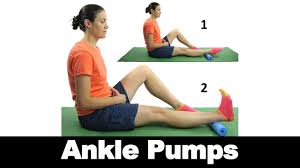
- take a supine lying position or back-supported sitting. Gradually move your foot up and down.
- do this movement several times, as often as every five or ten minutes.
- If you are watching television, you should pump your foot every time an advertisement comes on.
start this training immediately after the operation and continue it until you are fully recovered.
Ankle Rotations
- take a supine lying position or back-supported sitting
- Roll your ankle first inward towards the other foot and then outward away from the other foot.
- Repeat five times in clockwise and anticlockwise directions.
- This activity should take three minutes.
- Do 2 to 3 sessions a day.

Bed-Supported Knee Bends
- To start this exercise you have to take a supine lying position, now Glide your foot toward your glutes, flex your knee, and maintain your heel on the mattress. Avoid letting your knee roll inward.
- Your knee should be flexed up to seventy degrees up to one month then gradually increase the flexion. your knee in a maximally flexed position for five to ten seconds.
- extend your leg.
- Do it ten times.
- This activity should take three minutes.
- Do 2 to 3 sessions a day.
Buttock Contractions
- To start this exercise you have to lie on your back. contract your glute muscles and maintain a count of five.
- Do it ten times.
- This movement should take ninety seconds.
- Do 2 to 4 sessions a day.

Abduction Exercise
- To do an abduction exercise in gravity elimination you have to take a supine lying position and Slide your leg out to the side as much as you can and then back.
- Repeat ten times.
- This exercise takes 90 seconds to finish.
- Do 2 to 4 sessions a day
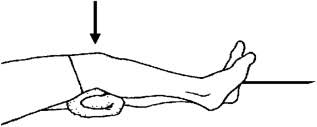
Quadriceps Set
- To do this exercise you can sit or take a supine lying position. put one towel roll under your knee. now contract your front thigh muscle. Try to extend your knee. Keep for five to ten seconds.
- do this exercise ten times for ten minutes, rest for 1 minute, and repeat.
- Resume until your thigh feels fatigued.
- This activity should take two minutes.
Straight Leg Raises

- To start straight leg raises exercise you have to take a supine lying position. now, contract your thigh muscle with your knee fully extended on the bed.
- Raise your leg several inches. maintain this leg raise for five to seven seconds.
- Gradually lower your leg.
- do it until your thigh muscle feels tired.
- This movement should take two minutes.
Standing Exercises
Soon after your procedure, you will be out of bed and able to stand. You will need help at first but, as you recover your strength, you will be able to stand alone. While doing these standing activities, make sure you are holding onto a strong surface such as a line connected to your bed or a wall.
Standing Knee Raises
- To do this exercise you have to stand near the wall and raise your affected leg toward your chest. Do not lift your knee more elevated than your waistline. Hold for 3 or 5 counts.
- Place your leg down.
- Do this ten times.
- This exercise should take 3 minutes.
- Do 3 to 4 sessions a day.
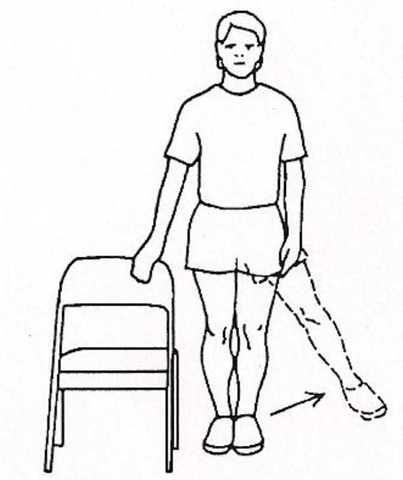
Standing Hip Abduction
- make sure your hip, knee, and foot are pointing directly forward. Hold your body straight. With your knee extended, raise your leg out to the side.
- Slowly lower your leg till your foot is back on the ground.
- Do it ten times.
- This activity should take two minutes.
- complete 2 to 4 sessions a day.
Standing Hip Extensions
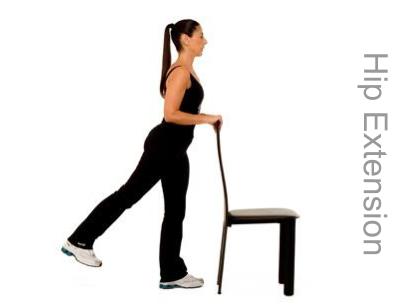
- To do this exercise you have to stand straight and raise your operated leg back gradually. Try to maintain your back straight. Hold for 5 seconds.
- Return your foot to the floor.
- Repeat 10 times.
- This exercise should take 2 minutes.
- Do 3 to 4 sessions a day.
Early Activity
Shortly after the operation, you will start to walk short spaces in your hospital room and do light activities every day. This early exercise helps your healing and helps your hip regain its power and movement.
Walking
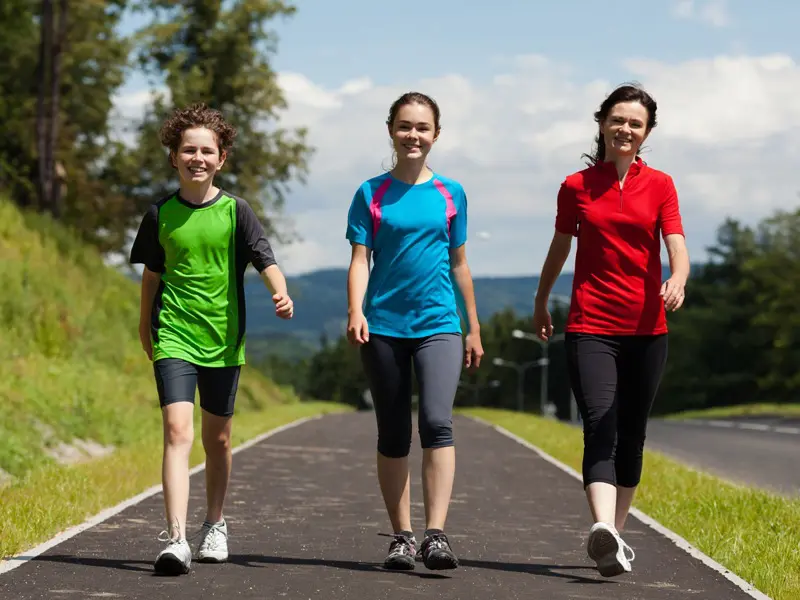
Appropriate walking is the most useful way to help your hip heal. foremost thing is you have to walk with a walker or crutches. How much weight to place on your lower limb will be advised by your physician or therapist.
Early on mobile activities like walking will assist you to regain motion in your hip.
You can get your hip joint movement normal by starting rehabilitation in the initial stage you can start with walking only. Your weight should be evenly distributed between your walker and crutches while you stand comfortably and straight. Move your walker or crutches a short distance before moving forward with your operated leg with the knee extended so your foot’s heel hits the ground first.
- Your foot will evenly rest on the ground as you progress according to the bending of your knee and ankle.
- As you complete the step, your toe will raise off the ground and your knee and hip will flex so that you can reach forward for your next step. Remember to first contact your heel, then flatten your foot, and finally lift your toes off the ground.
- Walk as rhythmically and smoothly as you can. Do not hurry. To walk in an even pattern, adjust your step height and pace as appropriate.
- As your muscle strength and endurance enhance, you may spend more time walking, and you will slowly put more weight on your leg.
- When your leg is strong enough to support your weight without a walker or crutches for more than 10 minutes, you can walk and stand without assistance.
Stair Climbing and Descending
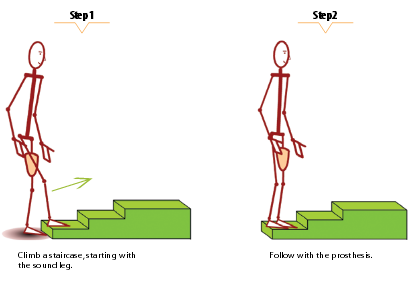
Stair climbing is an outstanding strengthening and endurance training, and it also needs flexibility.
- In the beginning, you will require a handrail for help and will be able to go just one step at a time. Consistently lead up the stairs with your sound leg and down the stairs with your affected leg. You have to recognize to go ascending stairs with a good leg and descend stairs with the operated leg.
- Until you have recovered the majority of your power and mobility, you might wish to ask someone to assist you with setup steps.
- Do not try to rise steps higher than the standard height (7 inches) and always utilize a handrail for balance.
- Step-by-step stair climbing is possible as you get stronger and more mobile.
Advanced Exercises and Activities
Your hip muscles have been weakened by the discomfort you experienced from your hip problems before surgery as well as the pain and swelling that followed. In addition, the muscles around your hip before total hip replacement became short and tight because your hip did not move. It will take several months to fully recover, and it will take some time for your muscles to rehabilitate and become used to your new, freely moving hip. The workouts and activities listed below will aid in the complete recovery of your hip muscles.
These exercises should be done in ten repetitions, four times a day. Wrap the tubing’s other end around the ankle of the leg that was operated on, then fasten it to something stationary, such as a locked door.

Elastic Tube Exercises
Resistive Hip Flexion

- To start this exercise you can stand with your hip-feet width apart. one end of the resistance band wrapped on a stable object and one over the b
- Carry your operated leg forward and hold the knee extended.
- Allow your leg to return to its starting position.
Resistive Hip Abduction
- Place yourself diagonally opposite the door that the tubing is linked to.
- Your operated leg should be extended to the side.
- Put your leg back in its original position
Resistive Hip Extensions
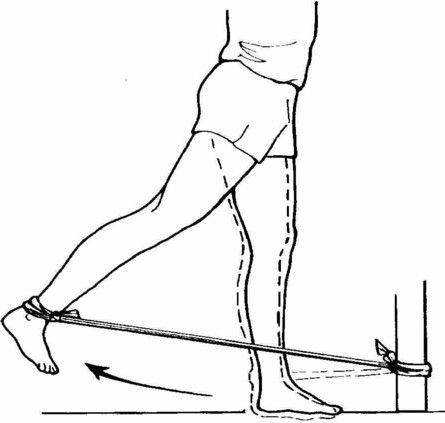
- Turn your back on the door where the tubing is hooked.
- Straighten your leg back.
- Put your leg back in its original position.
Exercycle
A good activity to help you restore muscular strength and hip mobility is riding an exercise bike.
- First, set the seat height so that your knee is practically straight and your bottom foot just touches the pedal.
- Pedal backward at first.
- Ride only after cycling backward in a comfortable motion is possible.
- Gradually raise the tension on the exercise cycle as you get stronger (about 4 to 6 weeks).
Walking
- Until your balance is back, use a cane to help you walk. If you are worried about walking in an unsteady environment outside, it is also secure to do it on a treadmill.
- Walk for 5 to 10 minutes, 3 to 4 times a day, at first.
- You can walk for 20 to 30 minutes, two to three times per day, as your power and endurance increase.
- Regular walks lasting 20 to 30 minutes, three to four times per week, when you have fully recovered, will help you keep your strength.
Which exercise you should avoid?
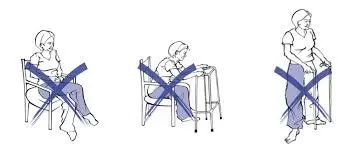
- These include sports like football, rugby, and martial arts where there is a high risk of falling.
- It is recommended to engage in low-impact activities including swimming (avoid breaststroke), cycling, hiking, and golf.
- Running, jogging, squash, racquetball, contact sports, sports where jumping is involved, and heavy lifting (over 50 lbs).
- Avoid flexing the hip at more than a 90-degree angle. you can flex up to 70 degrees.
- Don’t cross your legs at the knee. Your hip should not place lower than your hip like a squat exercise.
- Any movement that needs a sudden jerk should be avoided, as it could lead to an injury
- Keep your toes straight when you walk
Lifetime Precautions

After hip surgery, you may additionally need to take a few lifetime measures depending on your age and physical condition, like:
- Avoid bending your hips forward at an angle that is less than 90 degrees.
- Knee-crossing is not allowed by surgeon.
- Avoid postures like squatting when your hips are below your knees. Avoid making quick moves that could hurt yourself.
- Avoid twisting motions: Some movements can make dislocation occur more frequently. Examples include turning and crossing your legs.
- Sleep with a pillow between your legs: If you like to sleep on your side, it’s a good idea to maintain a pillow between your legs to support your hip and leg.
- Avoid repetitive, high-impact activities: High-impact sports like basketball and volleyball that require a lot of twisting as well as running and jumping can wear down joints and increase the chance of dislocation.
- Avoid hip rotation
FAQ
Which rehabilitation technique is used after total hip replacement?
In the starting, walking for 5 to 10 minutes is advisable, 3 to 4 times a day. As your power and endurance enhance, you can walk for 20 to 30 minutes, 2 to 3 times a day. when you have fully recovered, routine walks of 20 to 30 minutes, 3 to 4 times a week, will assist you to maintain your strength.
Why rehabilitation is necessary after hip replacement?
Transferring after hip replacement surgery is crucial since it accelerates recovery and reduces future issues.
Which is the best exercise for total hip replacement?
However, walking is commonly considered the best exercise following total hip replacement. This is because it helps to stimulate hip movement and is a low-impact exercise.
Which things you should avoid after hip replacement?
Do not cross your legs from the knees for at least six to nine weeks. Do not up your knee higher than hip. Do not lean ahead while sitting or as you sit down. Do not try to pick up objects on the floor while you are sitting position.
Which are the benefits of exercise after surgery?
Exercise performed during rehabilitation can help to reduce swelling and prevent surgical pain from evolving chronic. After replacement, rehabilitation speeds up the recovery process, and it helps you know the best way to care for yourself and return to activities of daily living.
How lengthy is the rehabilitation time after replacement?
As a general rule, rehabilitation after replacement lasts a few weeks or a few months. In some patients, rehabilitation will persist for much longer. You should not rush through your rehabilitation because the body needs time to adjust and recover after the operation. Physical therapy helps you speed up recovery and gain muscle and bone strength.
What are the goals of exercise after hip replacement?
Rehabilitation Goals:
To control function from declining.
Avoiding the loss of function for daily tasks.
Muscle strength regained or gained.
Strategies for making up for lost functionality
Maintaining the current function.

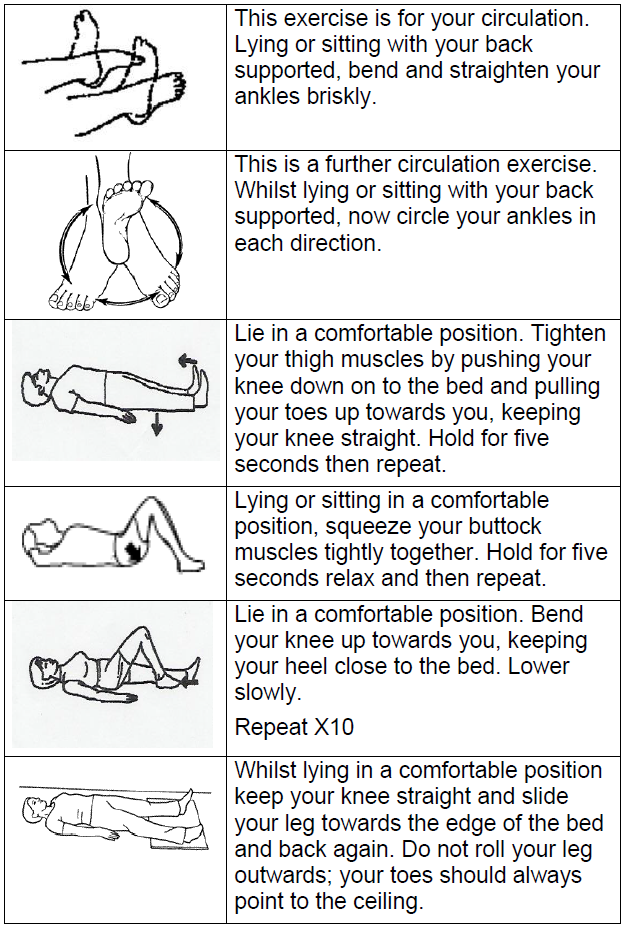
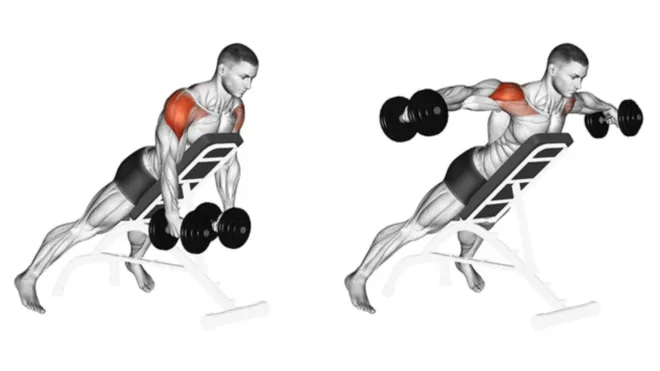
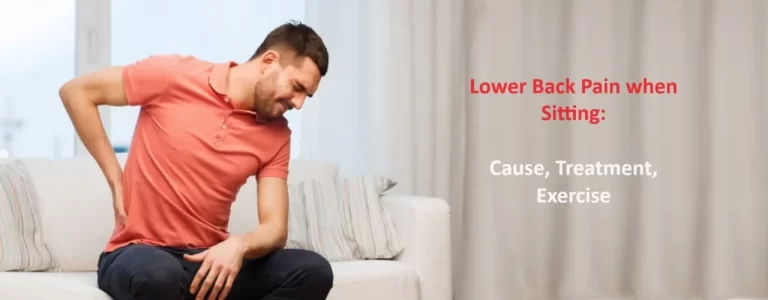
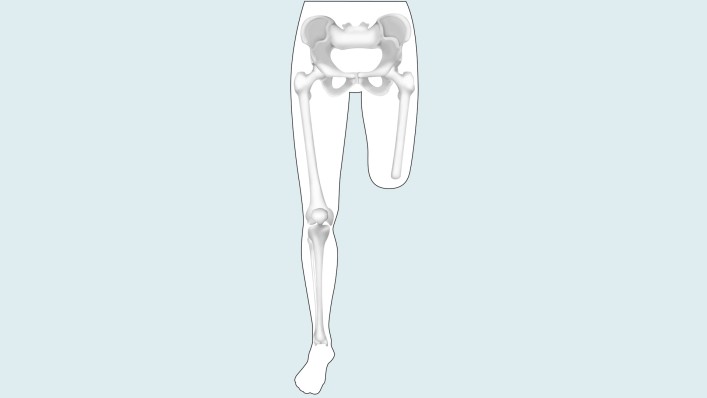
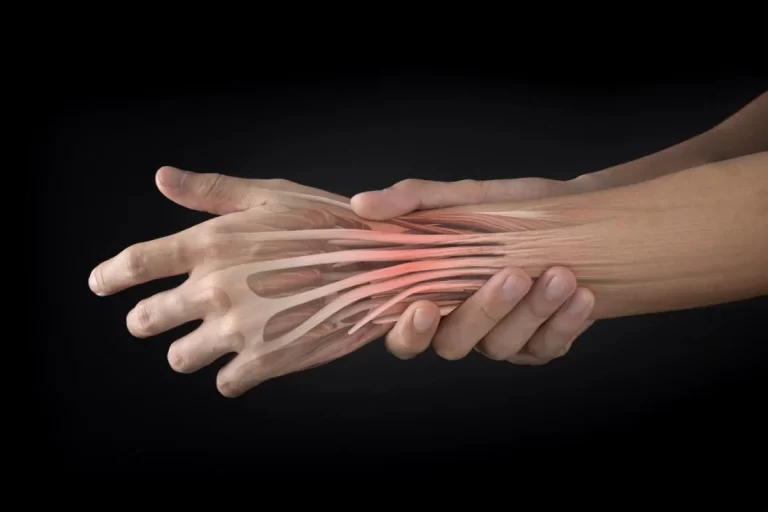


One Comment